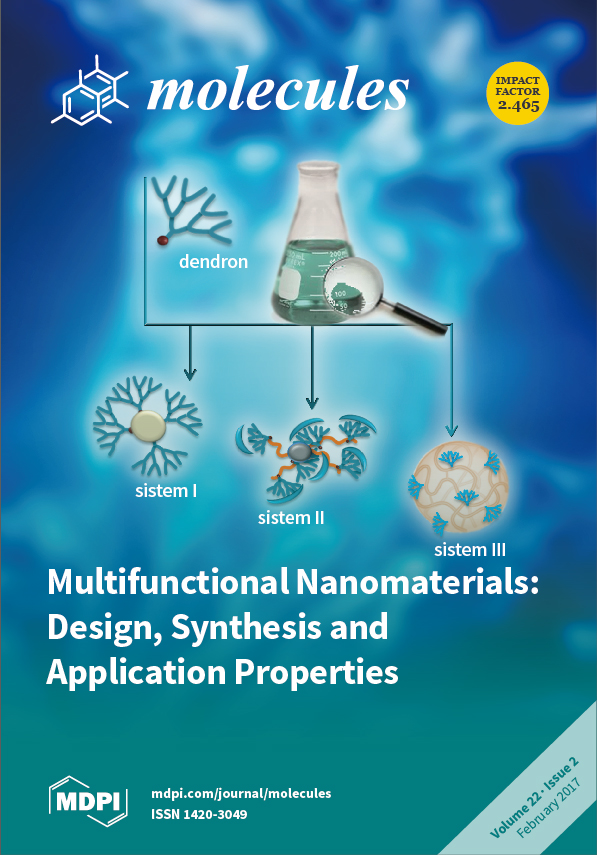1
Laboratório de Biologia do Reconhecer, Centro de Biociências e Biotecnologia, Universidade Estadual do Norte Fluminense Darcy Ribeiro, Av. Alberto Lamego, 2000, Parque Califórnia, Campos dos Goytacazes, 28013-602 Rio de Janeiro, Brazil
2
Laboratório Integrado de Pesquisa, Universidade Federal do Rio de Janeiro, Campus Macaé, Av. Aluízio da Silva Gomes, 50, Novo Cavaleiros, Macaé, 27930-560 Rio de Janeiro, Brazil
3
Laboratório de Produtos Bioativos, Universidade Federal do Rio de Janeiro, Campus Macaé, Polo Novo Cavaleiro—IMCT, R. Alcides da Conceição, 159, Novo Cavaleiros, Macaé, 27933-378 Rio de Janeiro, Brazil
4
Núcleo de Estudos em Ecologia e Desenvolvimento Sócio-Ambiental de Macaé, Universidade Federal do Rio de Janeiro, Av. São José Barreto, 764—São José do Barreto. Macaé, 27965-045 Rio de Janeiro, Brazil
5
Instituto de Pesquisa de Produtos Naturais Walter Mors, Centro de Ciências da Saúde, Universidade Federal do Rio de Janeiro, Brazil
6
Núcleo de Pesquisa em Produtos Naturais e Sintéticos, Departamento de Física e Química, Faculdade de Ciências Farmacêuticas de Ribeirão Preto, Universidade de São Paulo, Av. do Café s/n. 14040-020 Ribeirão Preto, Brazil
7
Laboratório de Química, Universidade Federal do Rio de Janeiro—Campus Macaé, Av. Aluízio da Silva Gomes, 50, Novo Cavaleiros. Macaé, 27930-560 Rio de Janeiro, Brazil
8
Laboratório de Produtos Naturais e Ensaios Biológicos, Departamento De Produtos Naturais e Alimentos, Faculdade de Farmácia, Universidade Federal do Rio de Janeiro, 21941-902 Rio de Janeiro, Brazil
Abstract
The aim of this research was to perform a phytochemical study of the methanol leaves extract of
T. guianensis (MET) guided by vasodilatory and antioxidant activities. The chemical profile of MET and the ethyl acetate fraction (EA fraction) was determined by HPLC-UV-MS and
[...] Read more.
The aim of this research was to perform a phytochemical study of the methanol leaves extract of
T. guianensis (MET) guided by vasodilatory and antioxidant activities. The chemical profile of MET and the ethyl acetate fraction (EA fraction) was determined by HPLC-UV-MS and EA fraction guided fractionation by reverse-phase chromatography. The vasorelaxant effects of MET, fractions, sub-fractions and constituents were assessed on rat aorta pre-contracted with phenylephrine. Antioxidant activity was evaluated by using a DPPH assay. The results show that MET-induced vasodilation was dependent on NO/cGMP; and that the PI3K/Akt pathway seems to be the main route involved in eNOS activation. The EA fraction showed greater vasodilatory and antioxidant potency and was submitted to further fractionation. This allowed the isolation and characterization of quercetin, quercetin 3-
O-(6″-
O-galloyl)-β-
d-galactopyranoside and 1,4,6-tri-
O-galloyl-β-
d-glucose. Also, galloyl-HHDP-hexoside and myricetin deoxyhexoside were identified by HPLC-UV-MS. These compounds are being described for the first time for
T. guianensis. 1,4,6-tri-
O-galloyl-β-
d-glucose and quercetin 3-
O-(6″-
O-galloyl)-β-
d-galactopyranoside showed no vasodilatory activity. Quercetin and myricetin glycoside seems to contribute to the MET activity, since they have been reported as vasodilatory flavonoids. MET-induced vasodilation could contribute to the hypotensive effect of
T. guianensis previously reported.
Full article






